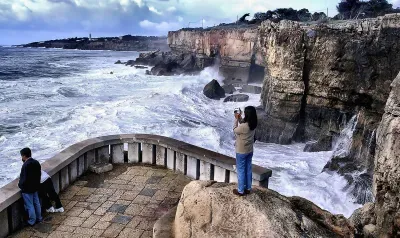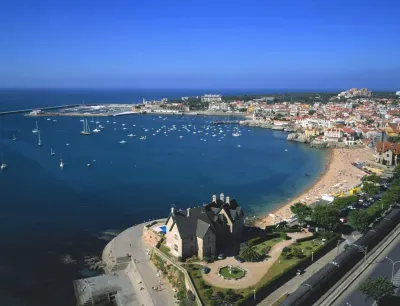
Literally translated, Boca do Inferno means the "Mouth of Hell". Whether this coastal rock formation near Cascais actually lives up to its name largely depends on the sea conditions. On a calm, sunny day it can be positively idyllic, however, when the full fury of an Atlantic storm is thrown this way the display can be awe-inspiring.
Boca do Inferno is located on the western edge of Cascais, around from the Santa Marta lighthouse. It is easily reachable from the town on foot but there is also plenty of parking here (and a restaurant) if you are driving.
The name Boca do Inferno comes from the gaping mouth of a collapsed cave into which the Atlantic swells slam before turning into a caldron of foam and spray. This dramatic spot has its own viewing platform and has been a favourite spot for storm-watching for well over a hundred years.
Boca do Inferno first came to prominence back in 1896 when it featured in one of the earliest moving films. Imaginatively entitled, "A Sea Cave Near Lisbon", the 13 second long silent "actuality film" wowed audiences around the world with dramatic footage of waves breaking, from inside the cave.
One of the more bizarre episodes in the history of Boca do Inferno relate to the British occult practitioner Aleister Crowley. It is said that in September 1930 Crowley concocted a plot with renown Portuguese poet Fernando Pessoa to fake his own suicide in order to escape his then girlfriend with whom he had grown tired. Three weeks after his "death" Crowley turned up in Berlin.
Today, there is a plaque on the rocks of Inferno do Boca inscribed with the words of his suicide note in Portuguese.
Attraction type
